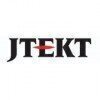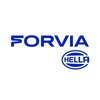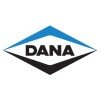Filter interviews by
Bridgestone Quality Engineer Interview Questions and Answers for Experienced
Bridgestone Quality Engineer Interview Experiences for Experienced
1 interview found
Interview Questionnaire
1 Question
- Q1. What is 7 Qc tools , TQM, Problem Solving mathology, 5S , SQC,
- Ans.
The 7 QC tools, TQM, problem-solving methodology, 5S, and SQC are all quality management techniques used to improve processes and products.
7 QC tools include Pareto chart, cause-and-effect diagram, flowchart, histogram, scatter diagram, control chart, and check sheet
TQM is a management approach that focuses on continuous improvement and customer satisfaction
Problem-solving methodology involves identifying, analyzing, a...
Top trending discussions






Interview questions from similar companies

I applied via Naukri.com and was interviewed in Dec 2020. There were 3 interview rounds.
Interview Questionnaire
1 Question
- Q1. Core Java, J2EE
Interview Preparation Tips

I applied via Walk-in and was interviewed before Sep 2020. There were 3 interview rounds.
Interview Questionnaire
2 Questions
- Q1. What is company production in here?
- Ans.
The company production refers to the manufacturing and output of products or services by the company.
Company production refers to the quantity and quality of goods or services produced.
It includes the manufacturing process, assembly, packaging, and delivery of products.
Production can also involve the provision of services, such as software development or consulting.
The company's production may vary depending on factors...
- Q2. What is function of shock absorber?
- Ans.
Shock absorbers are devices used in vehicles to absorb and dampen the impact of bumps and vibrations.
Absorb and dampen the impact of bumps and vibrations
Improve vehicle stability and control
Enhance driver and passenger comfort
Reduce wear and tear on other vehicle components
Maintain tire contact with the road surface
Prevent excessive bouncing and bouncing
Provide consistent handling and braking
Examples: coilover shocks,
Interview Preparation Tips

I applied via Approached by Company and was interviewed in Jul 2022. There was 1 interview round.
(2 Questions)
- Q1. Why you chose for quality??
- Q2. What is quality?why you do Mechanical Engineering?
- Ans.
Quality is meeting or exceeding customer expectations through consistent and reliable products or services.
Quality is a measure of how well a product or service meets customer needs and expectations.
It involves ensuring that products or services are consistent and reliable.
Quality is achieved through a combination of processes, systems, and people.
Mechanical engineering is a field that focuses on designing and developi...
Interview Preparation Tips
With good wages ..?

I applied via Approached by Company and was interviewed in May 2022. There were 4 interview rounds.

(1 Question)
- Q1. Basic HR question (tell me about yourself and similar)
(1 Question)
- Q1. Technical questions related to field
(1 Question)
- Q1. Interview cum interaction with top management
Interview Preparation Tips

(4 Questions)
- Q1. Tell me about your self
- Q2. Why you want to switch
- Q3. Past Experience
- Q4. Salary expected
(4 Questions)
- Q1. Related to Quality assurance
- Q2. 8D analysis steps
- Ans.
8D analysis is a problem-solving method used to identify, correct, and prevent recurring problems.
Define the problem
Form a team
Containment actions
Root cause analysis
Corrective actions
Implement permanent corrective actions
Prevent recurrence
Recognize team efforts
- Q3. 7QC tools steps
- Ans.
The 7QC tools are a set of quality control tools used for problem-solving and process improvement.
Identify the problem or process to be improved
Collect data related to the problem
Display data visually using tools like histograms or scatter plots
Analyze the data to identify root causes of the problem
Brainstorm and implement solutions
Monitor the results of the implemented solutions
Standardize the process to prevent recur
- Q4. How to handle warranty parts
- Ans.
Warranty parts should be properly documented, tracked, and analyzed to identify trends and improve product quality.
Create a system to track warranty parts including serial numbers, dates, and reasons for return
Analyze warranty parts data to identify common issues and trends
Work with suppliers to address recurring issues and improve product quality
Implement corrective actions based on warranty parts analysis to prevent
Any one past experience for quality issue
Interview Preparation Tips

I applied via Recruitment Consultant and was interviewed in Oct 2020. There were 3 interview rounds.
Interview Questionnaire
4 Questions
- Q1. GD&T symbols & explanation
- Ans.
GD&T symbols are used to specify geometric tolerances on engineering drawings.
GD&T stands for Geometric Dimensioning and Tolerancing
It is a system of symbols used to specify the allowable variation in form and size of features on a part
Examples of GD&T symbols include: flatness, perpendicularity, concentricity, and position
GD&T is important for ensuring parts are manufactured to the correct specifications and fit toget
- Q2. How to check true position on CMM
- Ans.
True position on CMM can be checked using a combination of software and hardware tools.
Use a calibrated probe to measure the feature location
Compare the measured location with the nominal location
Calculate the deviation and compare it with the tolerance
Use software tools like GD&T to analyze the results
Ensure the CMM is calibrated and the probe is in good condition
- Q3. What is FMEA
- Ans.
FMEA stands for Failure Mode and Effects Analysis. It is a systematic approach to identify and prevent potential failures in a process or product.
FMEA is used to identify potential failures in a process or product and their effects on the system.
It involves analyzing the likelihood of failure, severity of the consequences, and the ability to detect the failure before it occurs.
FMEA is commonly used in industries such a...
- Q4. How to do instrument selection
- Ans.
Instrument selection involves identifying the appropriate tools and equipment for a specific task or process.
Identify the purpose of the instrument
Consider the accuracy and precision required
Evaluate the cost and availability
Ensure the instrument is compatible with other equipment
Consider the maintenance and calibration requirements
Interview Preparation Tips
Skills evaluated in this interview

I applied via Walk-in and was interviewed in Oct 2023. There were 3 interview rounds.

(2 Questions)
- Q1. What is the function of alternator &stator
- Ans.
The alternator generates electricity to power the vehicle's electrical system, while the stator is a stationary component that helps produce electricity in the alternator.
Alternator converts mechanical energy into electrical energy
Stator is a stationary part of the alternator
Stator contains wire windings that produce electricity when the rotor spins
Alternator charges the battery and powers the electrical system of the
- Q2. What is winding
- Ans.
Winding is the process of wrapping a material around a core or spool to create a coil or roll.
Winding is commonly used in the manufacturing of electrical coils, transformers, inductors, and motors.
The material being wound can be wire, thread, yarn, tape, or any other flexible material.
The winding process can be done manually or using automated machinery.
Examples include winding copper wire around a bobbin to create a t...
(2 Questions)
- Q1. What is alternator &stator
- Ans.
An alternator is a device that converts mechanical energy into electrical energy, while a stator is the stationary part of a rotary system.
Alternator is used in vehicles to charge the battery and power the electrical system
Stator is the stationary part of an electric motor or generator
Alternator produces alternating current (AC) while stator helps in generating a magnetic field
- Q2. What is 52wh word
- Ans.
52wh word is a term used in quality engineering to refer to a specific type of problem-solving technique.
52wh word stands for Who, What, Where, When, Why, How, How much, How many, and How often.
It is used to systematically analyze a problem by asking these key questions.
For example, when faced with a quality issue in a manufacturing process, a quality engineer may use the 52wh word technique to identify the root cause
Interview Preparation Tips

I applied via Approached by Company and was interviewed before Jan 2022. There were 4 interview rounds.

(2 Questions)
- Q1. Basic theoretical Questions of B.tech which are for fresher they asked for experienced also.
- Q2. Star delta diagram Resistance circuit
(1 Question)
- Q1. Why switching previous company
(1 Question)
- Q1. Personal information
Interview Preparation Tips

I applied via Walk-in and was interviewed before Sep 2022. There were 4 interview rounds.

(4 Questions)
- Q1. On behalf of your past or current experience,during this period some of the question can be ask related jtekt and what is the products.
- Q2. Work ability and punctuality
- Q3. Flexibility and compromising in some situation.
- Q4. Team handling and suggestions
Overall about your interview and personality,way of discussion and attitude,how to explain your answer and reactions.
(1 Question)
- Q1. About your family and salary discussion on behalf of your interview and selected designation.
Interview Preparation Tips
- Diploma
- Instrumentation
- Inspection
- SPC
- MSA
- Layout
- Metrology
- Engineering Drawing
- PPAP Preparation
Best wishes
Tell us how to improve this page.
Bridgestone Interviews By Designations
- Bridgestone Logistic Coordinator Interview Questions
- Bridgestone Graduate Engineer Trainee (Get) Interview Questions
- Bridgestone Logistics Executive Interview Questions
- Bridgestone Senior Associate Interview Questions
- Bridgestone Electrical Engineer Interview Questions
- Bridgestone Assistant Manager Interview Questions
- Bridgestone Quality Engineer Interview Questions
- Bridgestone Territory Sales Manager Interview Questions
- Show more
Interview Questions for Popular Designations
- Quality Inspector Interview Questions
- Senior Quality Engineer Interview Questions
- Quality Controller Interview Questions
- Quality Assurance Interview Questions
- Quality Manager Interview Questions
- Quality Executive Interview Questions
- Quality Assurance Officer Interview Questions
- Quality Assurance Quality Control Engineer Interview Questions
- Show more
Quality Engineer Interview Questions from Similar Companies
Fast track your campus placements
Bridgestone Quality Engineer Reviews and Ratings
based on 4 reviews
Rating in categories
|
Territory Sales Manager
99
salaries
| ₹5.8 L/yr - ₹14.8 L/yr |
|
Assistant Manager
98
salaries
| ₹7 L/yr - ₹18 L/yr |
|
Territory Manager
73
salaries
| ₹5.3 L/yr - ₹18 L/yr |
|
Senior Engineer
45
salaries
| ₹5.2 L/yr - ₹11.9 L/yr |
|
Deputy Manager
43
salaries
| ₹11.8 L/yr - ₹21.6 L/yr |

Bosch

Faurecia

Hitachi Astemo

Valeo
- Home >
- Interviews >
- Bridgestone Interview Questions >
- Bridgestone Quality Engineer Interview Questions for Experienced














